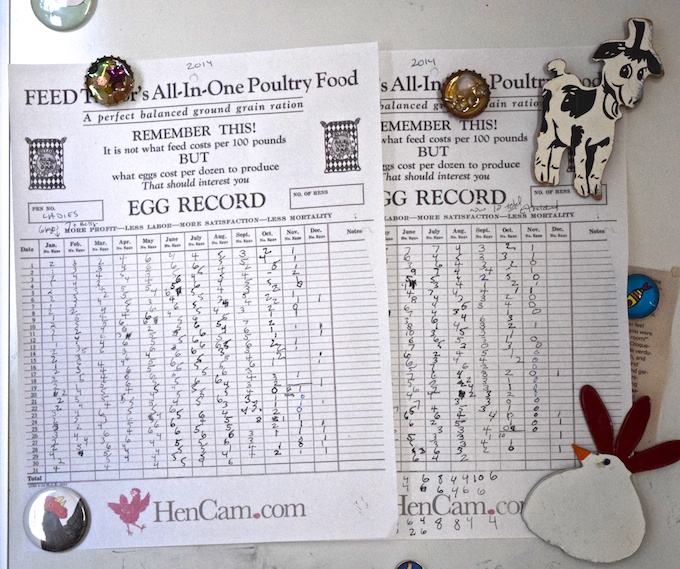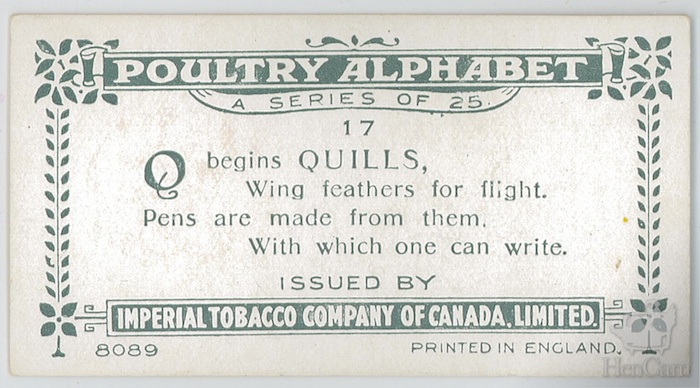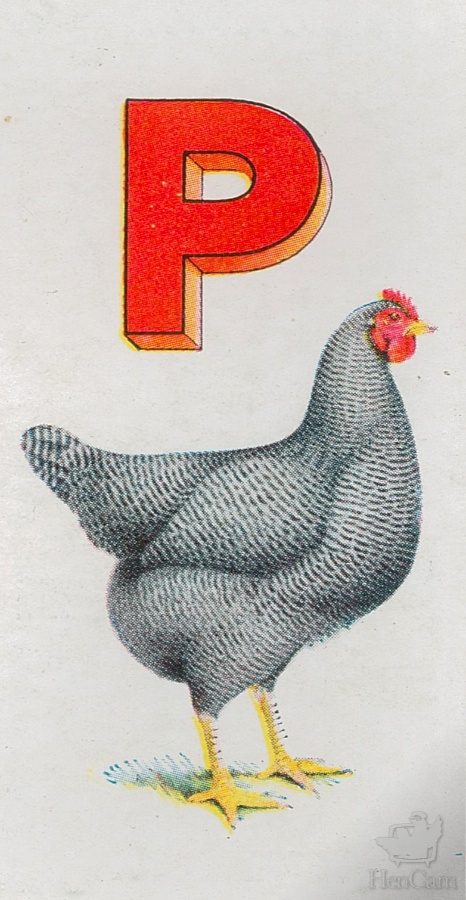I keep a mixed flock of breeds of mixed ages, so it’s obvious that egg production isn’t my number one priority. If it was, I’d have all leghorns, and then only until they reach their second molt. Then I’d start fresh with another batch of chicks. But, like many backyard chicken keepers, I have a varied lot. Partly this is due to the fact that I become attached to the birds, and let them live into old age. (Curious about how long hens live? Read this FAQ.) Partly, it’s because I value eggs of different shell colors – it doesn’t make a whit of difference in taste, but they’re so pretty! Same goes for fancy feathers. Simply put, they’re fun to look at. Partly, I keep mixed flocks because I like the unique personalities of the different breeds.
Still, I like eggs. A lot. So, I try to select for breeds that don’t go broody. That’s why there’s only one cochin in the lot. (Pearl rarely lays, but she is quite the sight.)

Yesterday I tallied up the year end egg count. (A printable version of this vintage egg chart is here.)

The Gems are the hens in the Big Barn (seen on the BarnCam.) They hatched in the spring of 2011, so they are now finishing up their third year. From now on, egg production will go down, and I also expect to see losses as they succumb to illnesses so prevalent in older birds. Also in the Big Barn is Misty, a younger hen that had bullying issues with her own chickmates. but who was put in her place by the older hens. She fits in very well now. I started the year with 11 in that barn, but lost Etheldred to disease. I collected 1209 eggs, which comes out to about 120 eggs per bird. That’s not a lot. There was a bout of thin-shelled eggs due to a virus. There was a stretch of broodiness. There was the normal molt. Several of the hens are breeds not known for high production, like Agatha, the Speckled Sussex.

The previous year saw 251 more eggs from that lot. This is why real farmers have to keep only young chickens.
The Ladies, the hens seen on the main HenCam, are younger. This fall was their first molt. None of these chickens went broody. Some are breeds touted for high production, like the Black Stars, and Twiggy, the Leghorn.

However, Beatrix and Owly are kept for their pretty bluish eggs, and Veronica for her speckled ones. They lay, but not everyday.

The Ladies laid 1215 eggs in 2014. That’s an average of 202 eggs per hen, quite a marked improvement over the neighboring Gems. Good going, Ladies!
How was the egg count for your flock?













